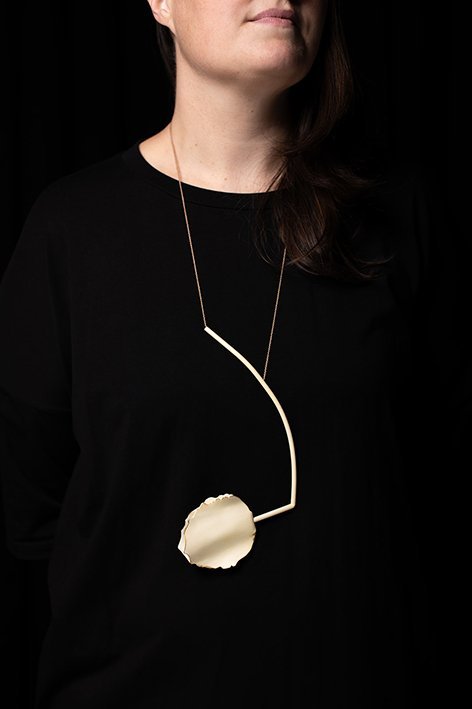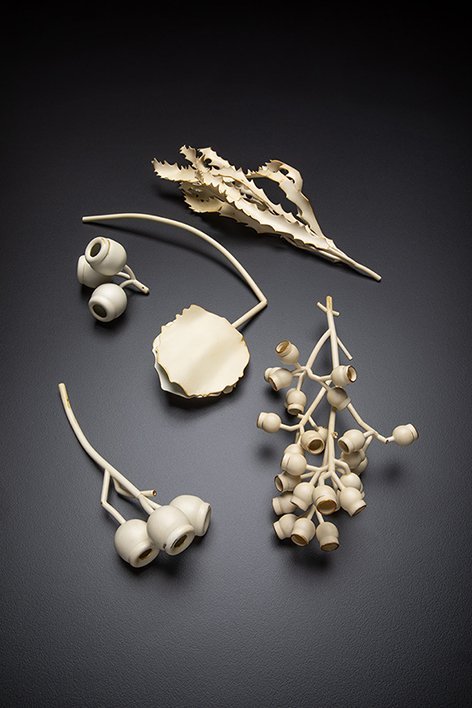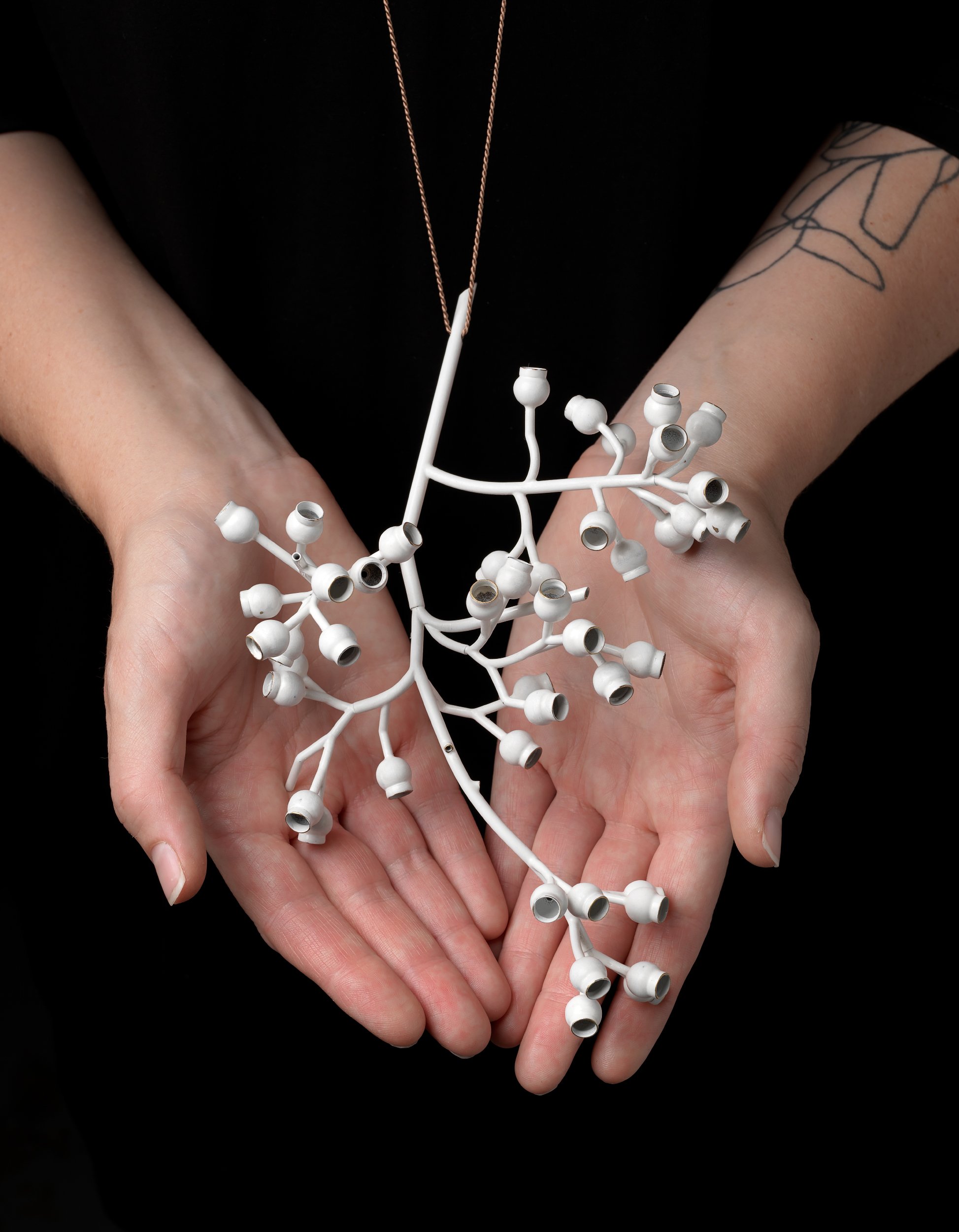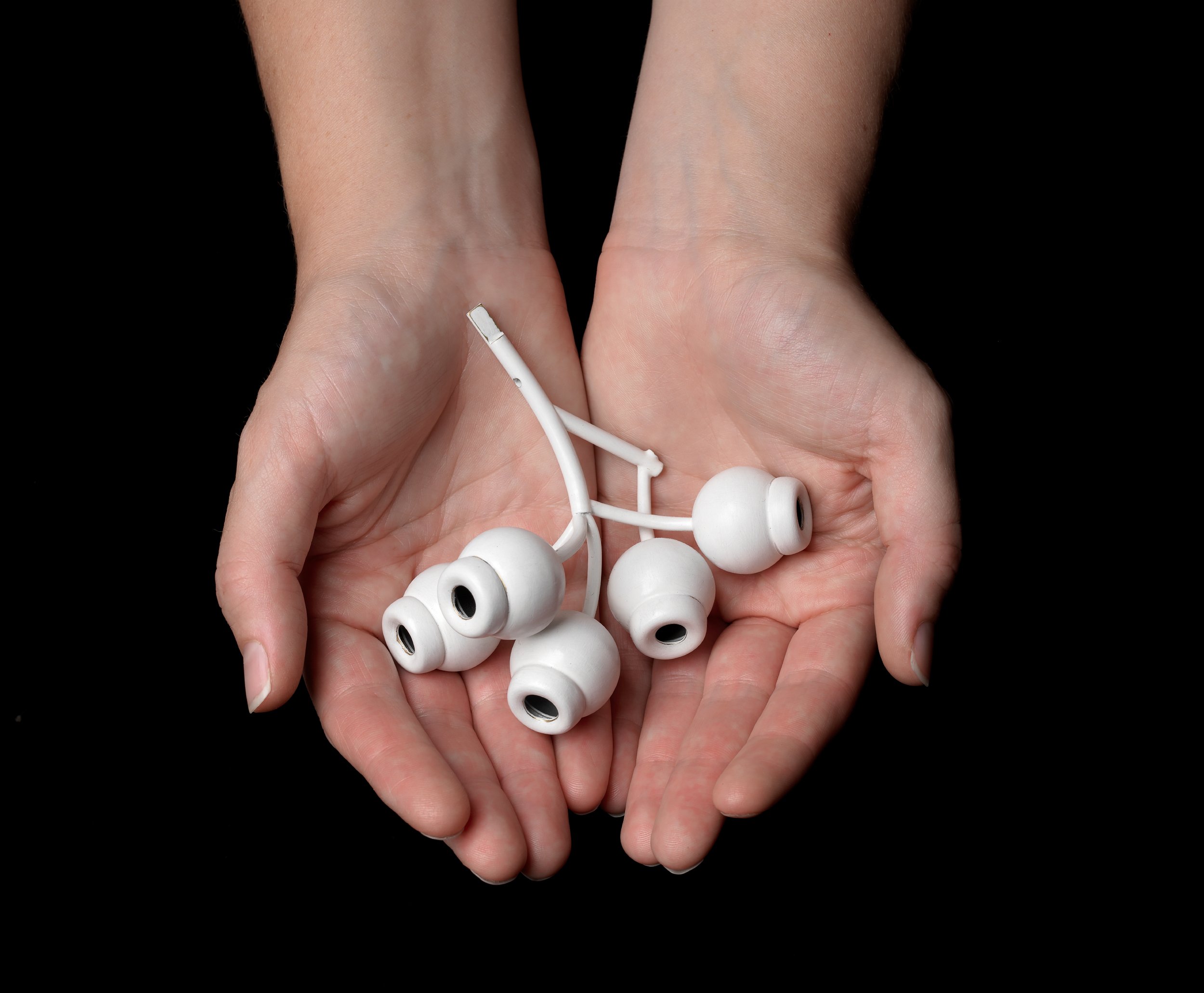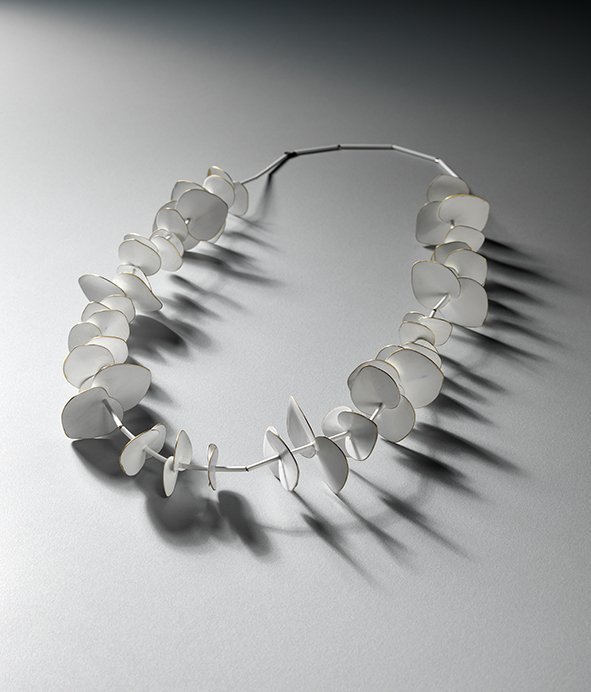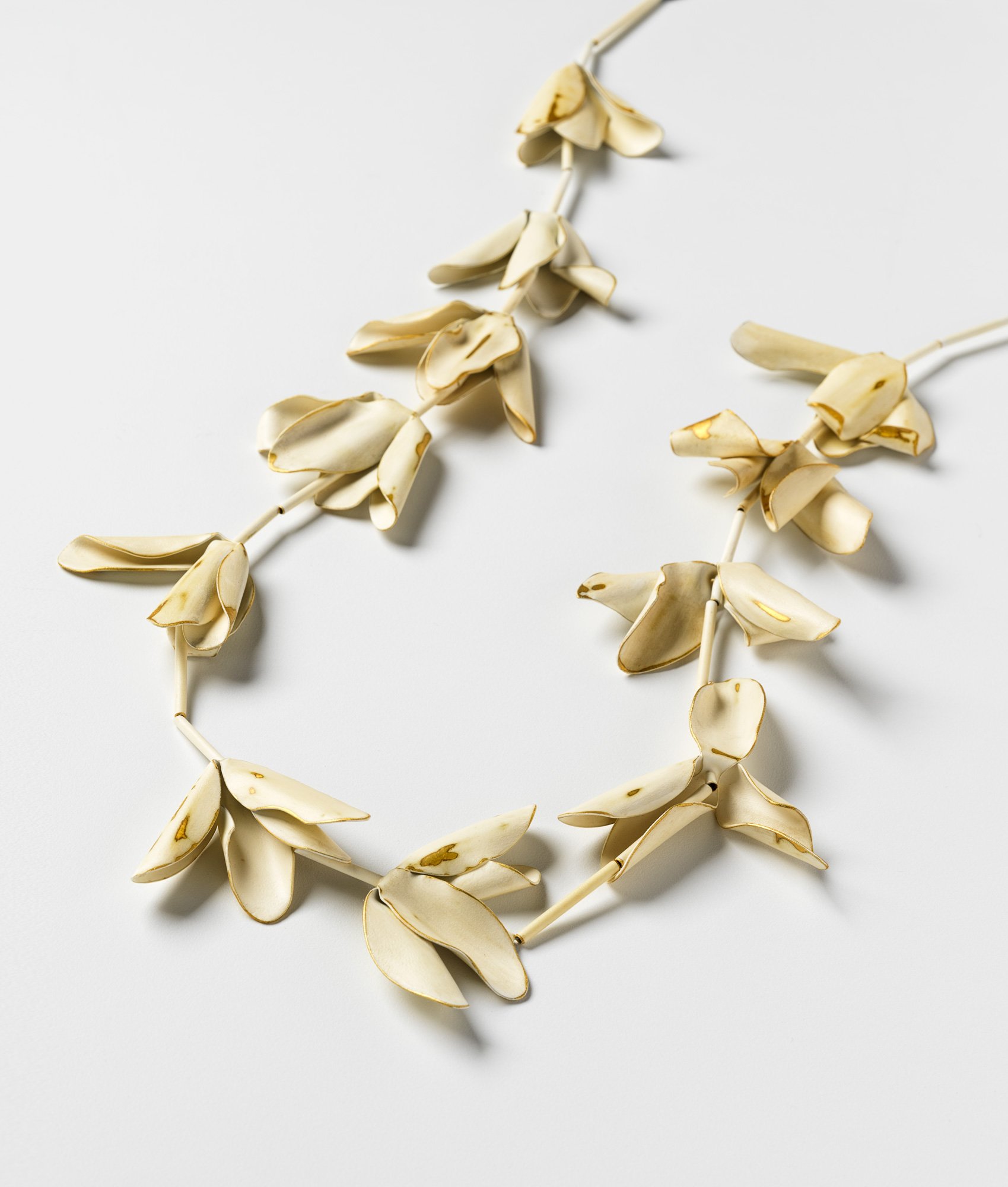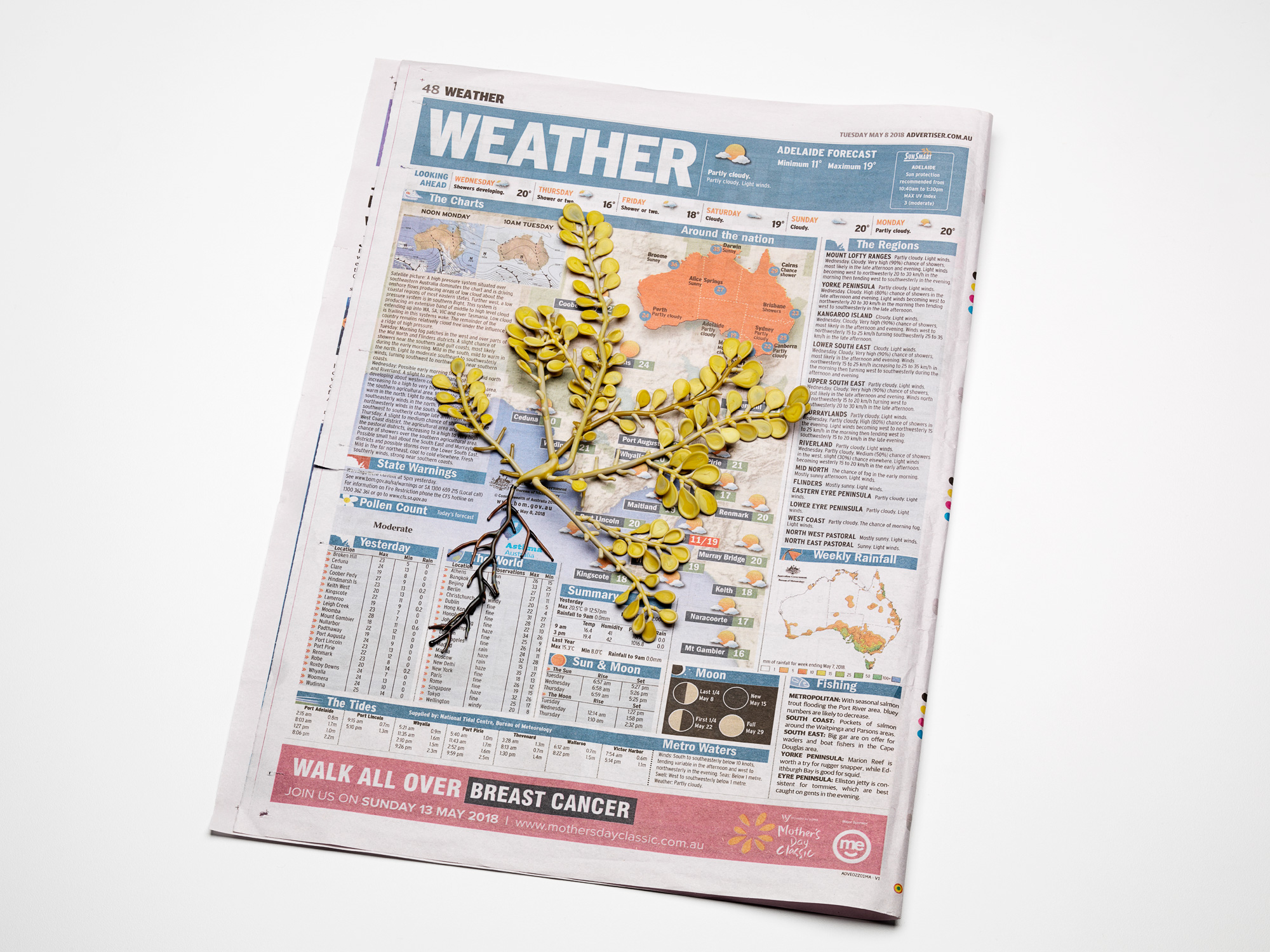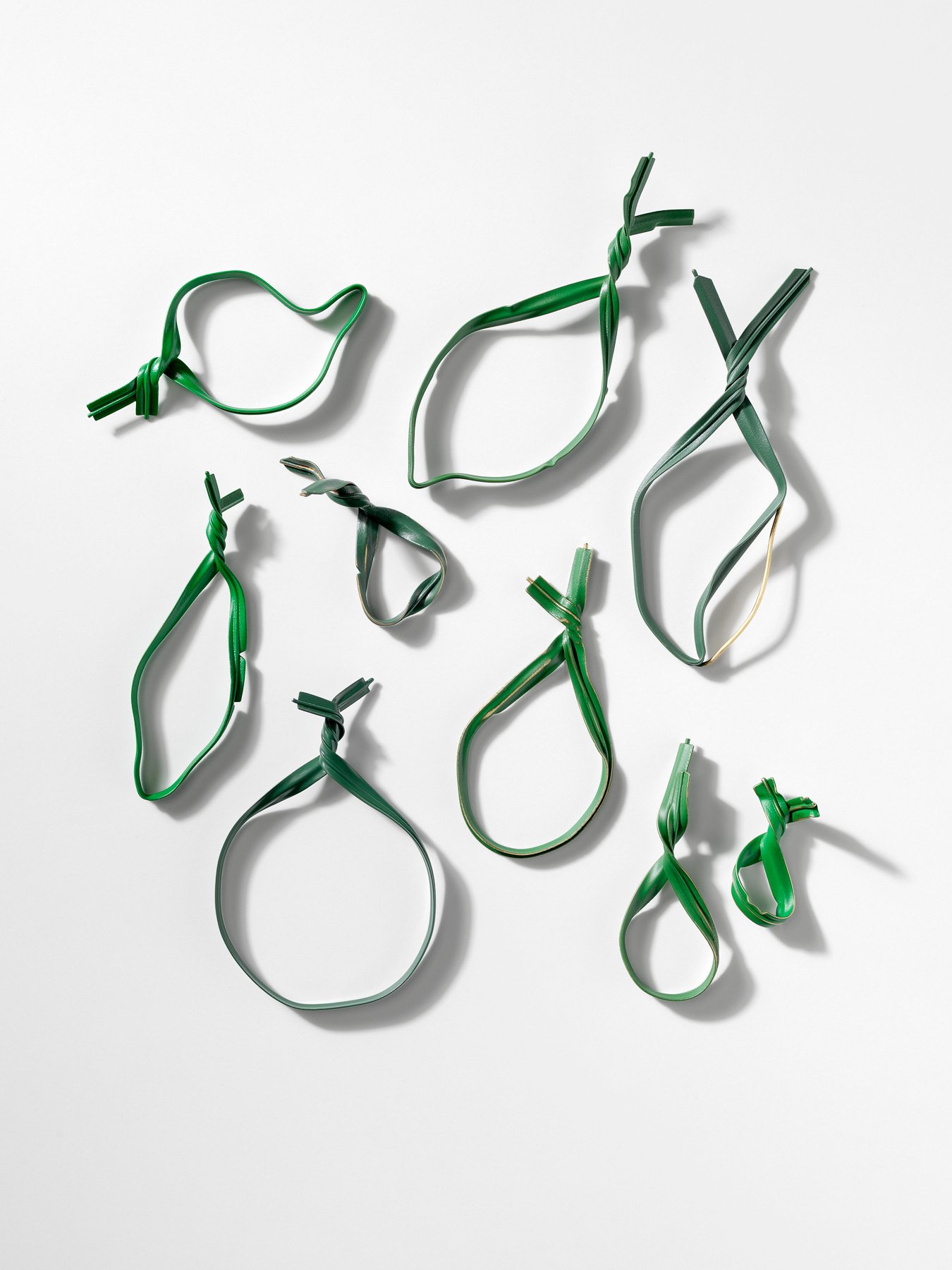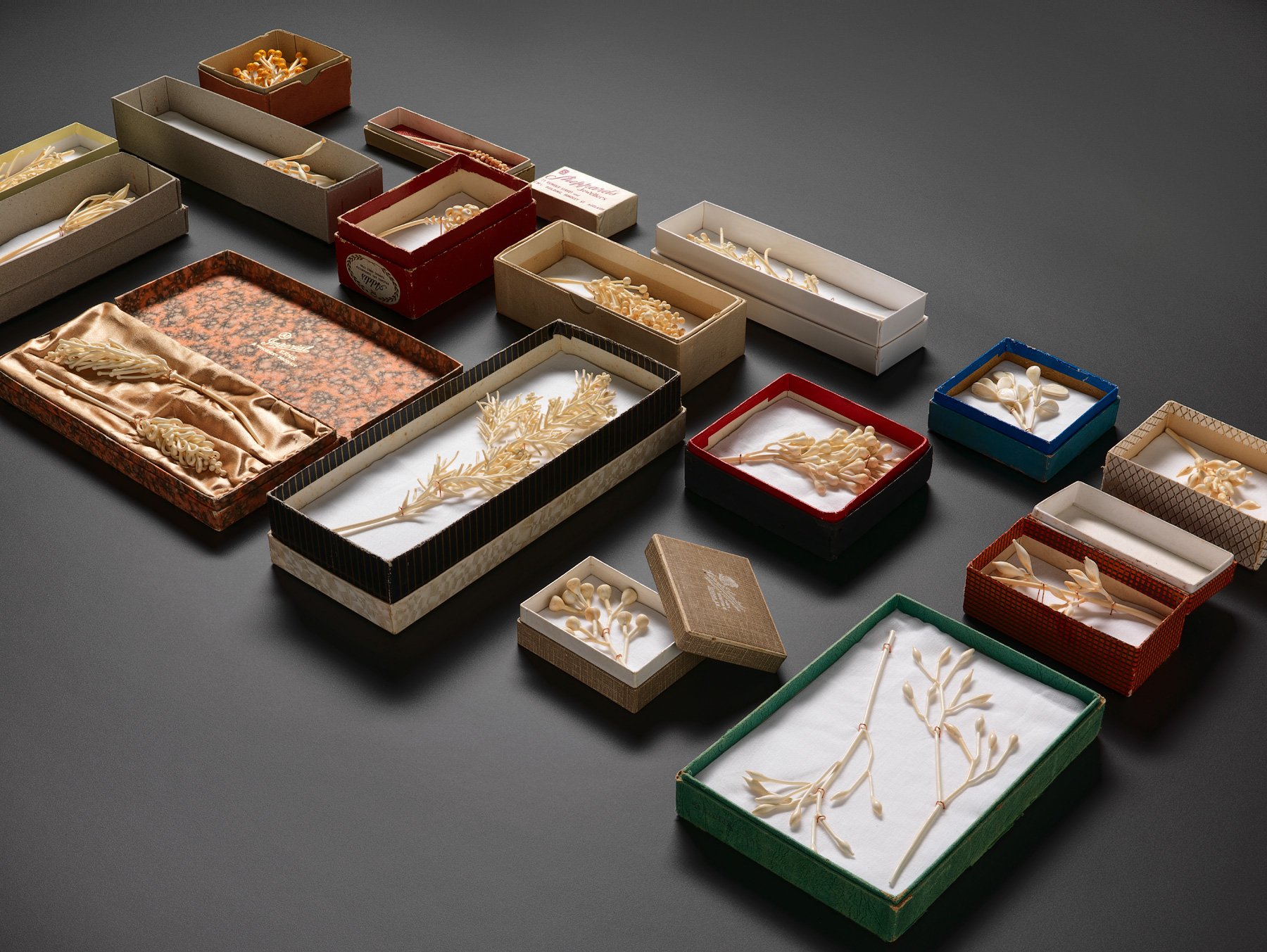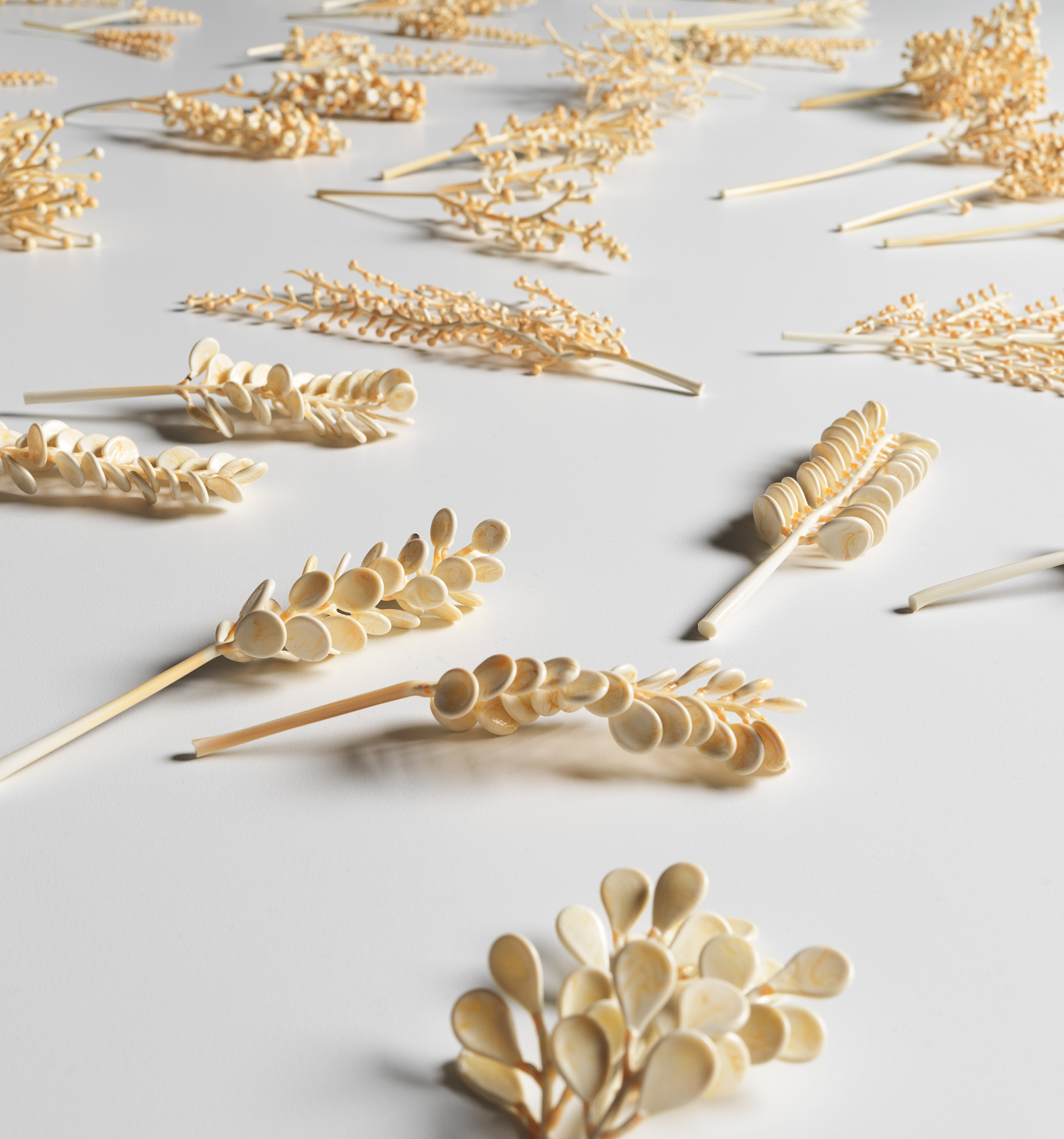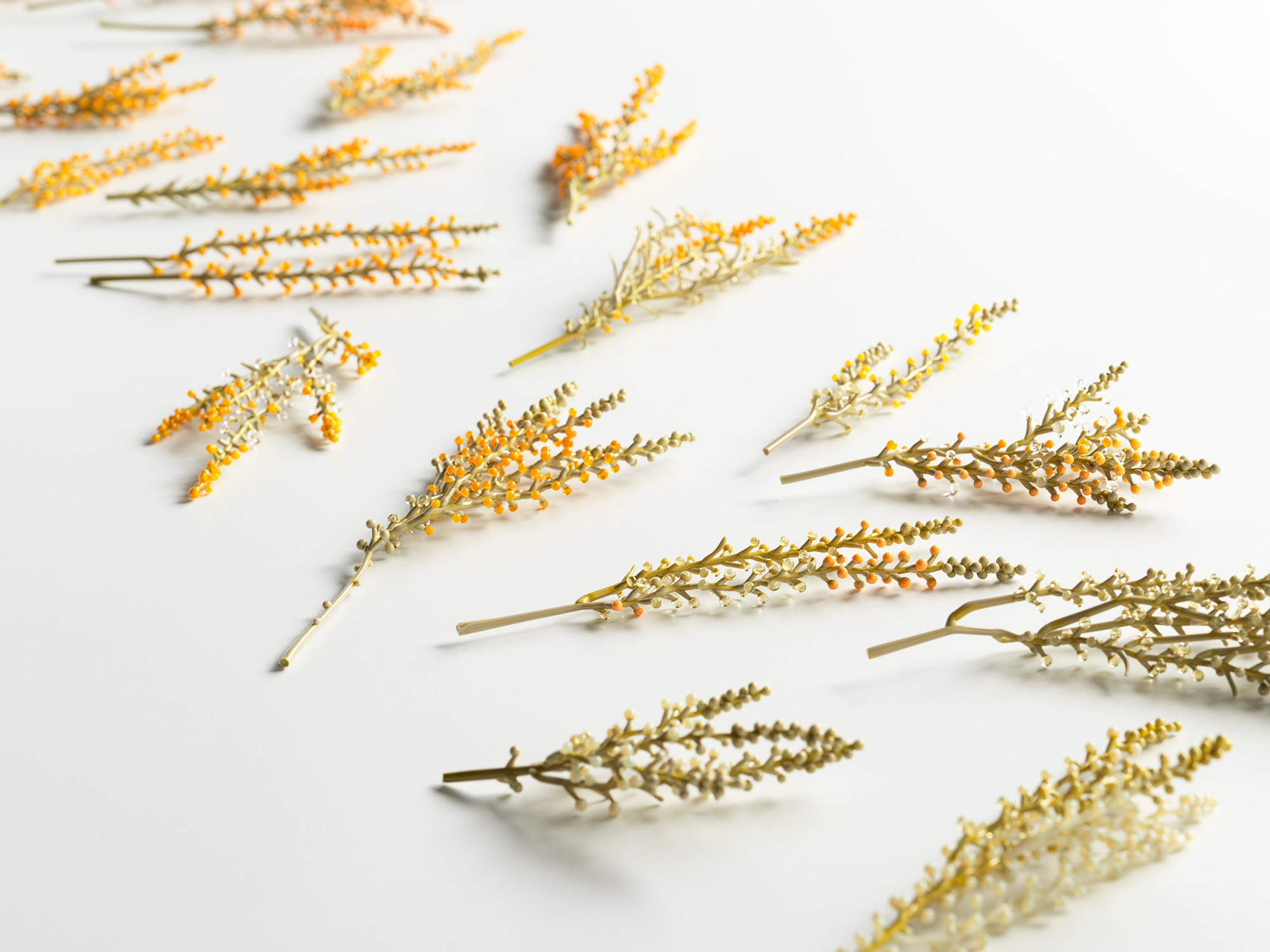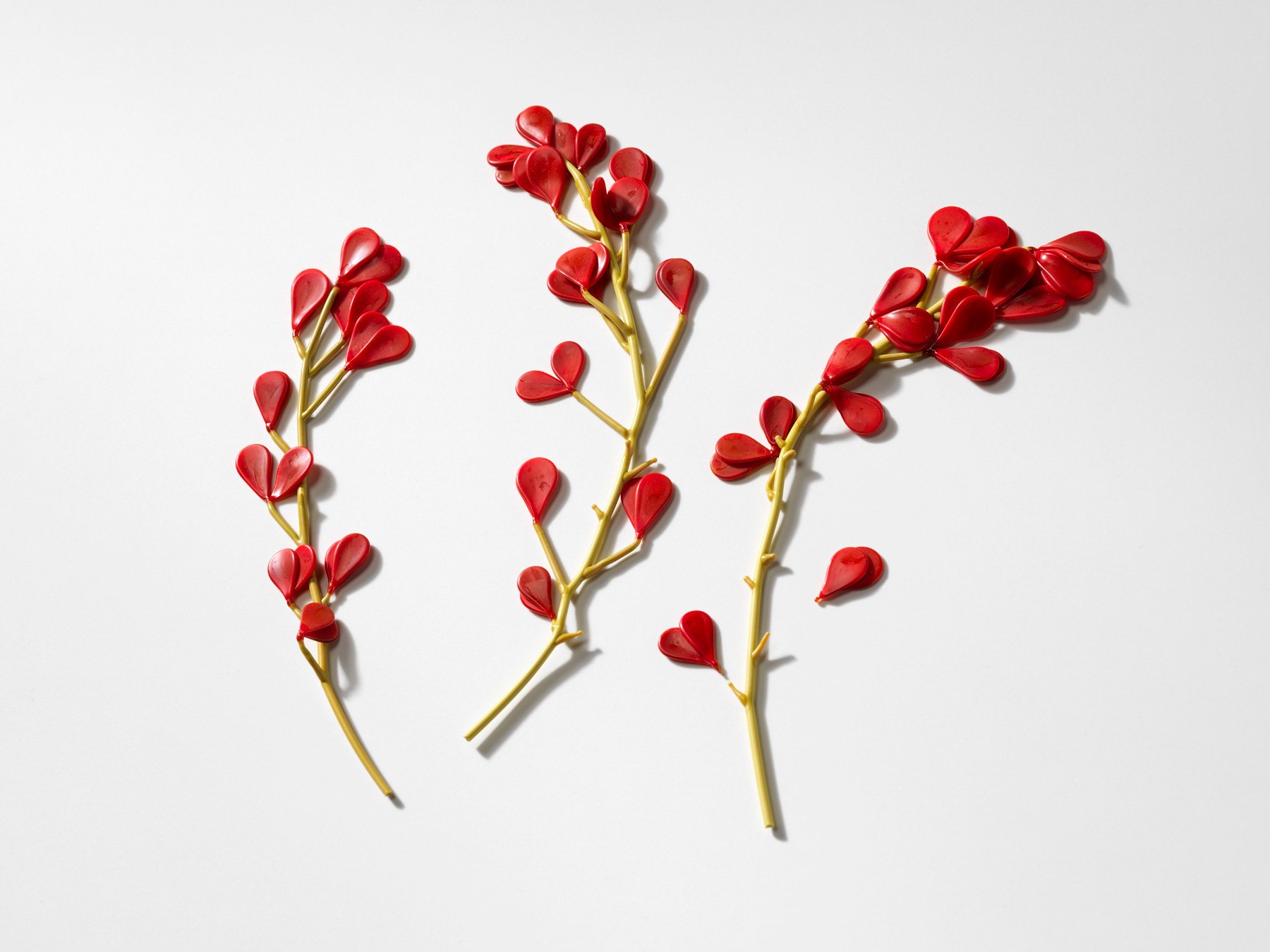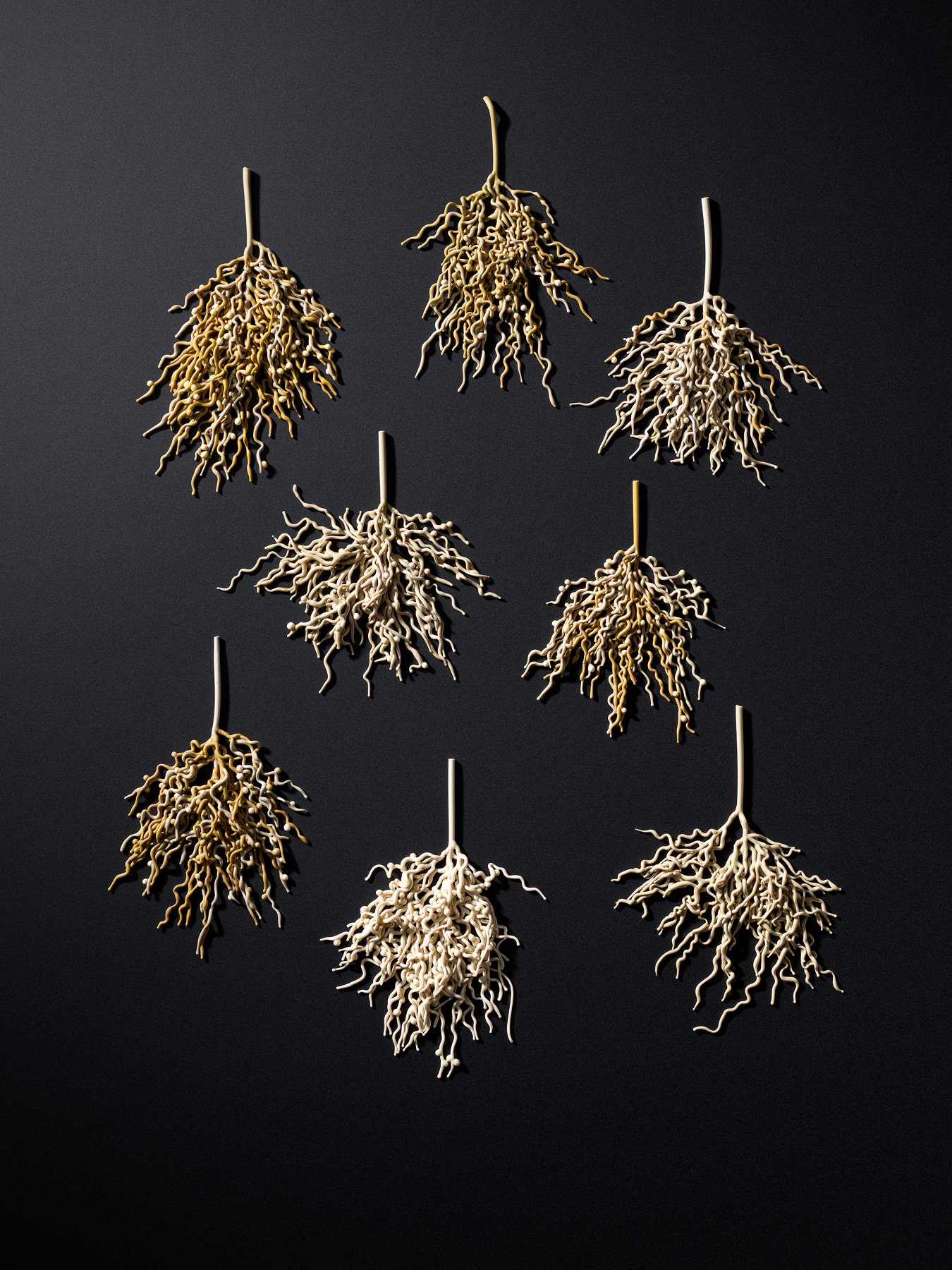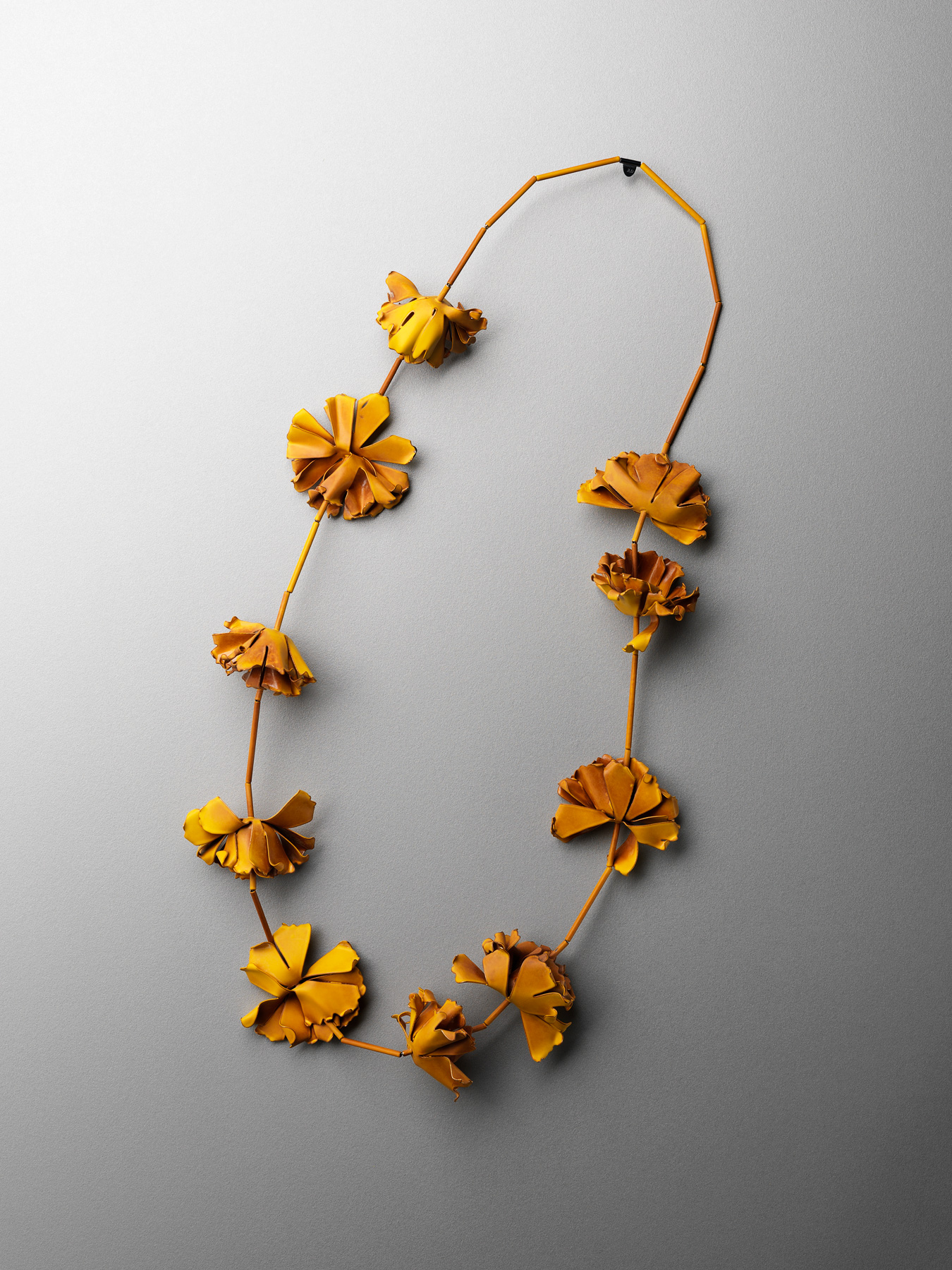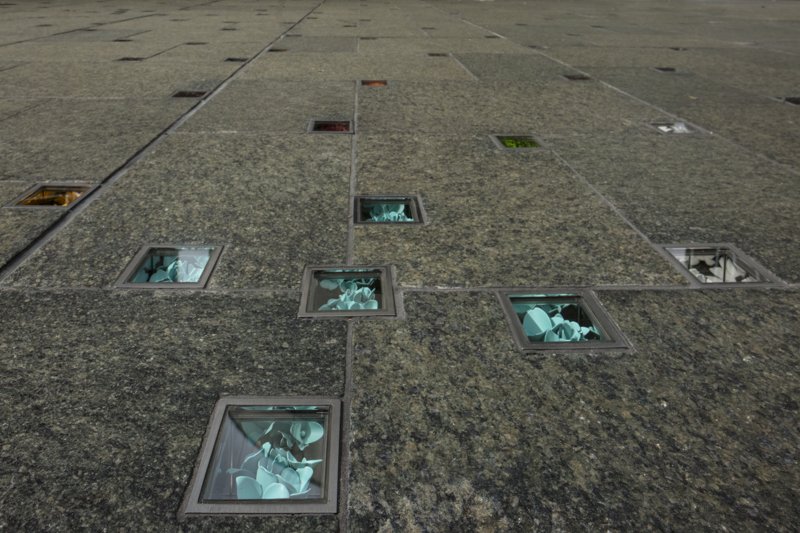Jess Dare
Image: Grant Hancock
Biography
Born 1982, lives and works in Adelaide on the traditional lands of the Kaurna people.
Jess Dare’s arts practice is renowned for working with both metal and glass. She completed a Bachelor of Visual Arts specialising in Jewellery at the Adelaide Centre for the Arts TAFE SA in 2006. She is a skilled flameworker, having studied with various local and international glass artists since 2005.
Jess joined Gray Street Workshop as an access tenant in 2007 and became a partner of the workshop in 2010.
For over a decade Jess has used the potent symbolism of flowers, to explore themes of memory, loss and grief. Flowers are alive for the briefest of times, a bittersweet reminder of life’s transience.
Jess has undertaken international residencies researching floral culture in Bangkok, Thailand (2014) and Shanghai, China (2015).
In 2016/17 she undertook a major public art commission, working closely with Professor Richard Johnson AO to create a permanent memorial in Sydney’s Martin Place symbolising the spontaneous sea of flowers laid by thousands of people following the December 2014 Martin Place siege in the Lindt Café.
Jess exhibits nationally and internationally and is represented in major international, national and state collections including Musée des Arts Decoratifs, Paris; The National Gallery of Australia, Canberra; National Gallery of Victoria and the Art Gallery of South Australia.
“At the core of my practice is my connection with materials and process. It’s repetitive, labour intensive, it’s how I think, write and make, I go over it, again and again to stay in that moment, to really understand it, to come to terms with it. Labour intensive making is my therapeutic balm and a conscious act of un-forgetting.”
-Jess Dare
ARtist STATEMENT
I am a contemporary jeweller and partner of Gray Street Workshop (est.1985). I work predominately in glass using lampworking techniques and non precious metal. My exhibition work is influenced by nature, botanical specimens and memory. I use nature as a metaphor to investigate concepts of the fragility and transience of memory. To me flowers are a constant reminder that life is ephemeral, ever changing, momentary and precious.
As a jeweller I have always been drawn to the miniature, it’s how I view the world, in small minute details. For me, this intimate scale draws people into my sense of wonder, whilst the gigantic thrusts a world upon the viewer. I also use this scale to accentuate the sense of intrigue and awe that I get from the natural world.
My work draws parallels between the different ways that throughout history people have attempted to preserve flowers by means of illustration, photography, flower pressing, specimen collection and botanical models. Another powerful influence has been the extraordinary works of Leopold and Rudolf Blaschka- particularly the highly realistic collection of glass plant models created by for Harvard University between 1887 to 1936.


